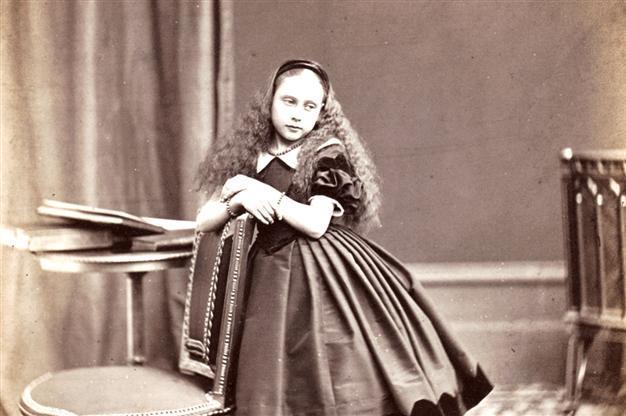Istanbul Modern sheds light on portrait history
ISTANBUL- Hürriyet Daily News

One of the key figures in the earliest part of the history of photography was photographer
Andre-Adolphe Eugene Disderi, who is represented in the show with his portrait of
‘Princess Beatrice’.
Istanbul Modern is presenting “Gaze,” an exhibition on the 160-year history of portrait photography with a selection from Bank of America Merrill Lynch’s collection. Curated by Sena Çakırkaya, the exhibition invites visitors to track social changes in the process through the gaze of “the object of the photograph” and to observe the changes in terms of aesthetic tendencies through that of the photographer.
The show is part of Bank of America’s “Art in our Communities” program, which offers museums and nonprofit galleries the opportunity to borrow complete or customized exhibitions from the bank’s collection at no cost.
“Gaze” is comprised of four sections, each devoted to one chief aspect of the drastic change the medium has shown over the years. The first section, titled “Fiction of the Self,” focuses on the earliest part of the history of photography, starting with 1843, and showcases how portraiture ceased to be a privilege of the aristocracy or bourgeoisie with the emergence of the new medium. One of the key figures in this process is photographer Andre-Adolphe Eugene Disderi, who is included in the show with his portrait of Princess Beatrice. “Disderi earned worldwide renown in the 1880s for creating illustrated calling cards using a method to serially produce portraits, which also attracted the middle classes. This brought liberalization to the medium, because he produced these calling cards with a very cost-effective method that made them accessible for lower classes in the following process,” Çakırkaya said.
Rare treasures
The second section, titled “Inspiration,” features rare treasures like Julia Margaret Cameron’s Lord Alfred Tennyson portrait, Gertrude Käsebier’s Auguste Rodin portrait, Edward Steichen’s piece titled “Henri Matisse with La Serpentina” and Man Ray’s Salvador Dali portrait. This second section looks into the process through which photography drew away from painting’s technical and artistic style and attempted to develop its own artistic approach.
The third section, called “Candid Lives,” offers a chance to observe how the social, economic and political developments between the two world wars led to great changes in people’s everyday lives and perceptions and how photography turned its face to realism to record these changes, to reveal the effects of war on ordinary people and to capture celebrities at moments when they were abstracted from fame. This section displays three works by August Sander and must-see pieces like Diane Arbus’s “Junior Interstate Ball Room Champions,” Yousuf Karsh’s Marc Chagall portrait, Lee Friedlander’s Miles Davis portrait, Bill Owens’ work titled “Suburb” and Philippe Halsman’s Nixon piece from his “Jump” series.
The fourth section, titled “Subjective Reality,” focuses on the final phase of photography, when the medium became a means of problematizing the concept of gaze. “The gaze, which can become a surveillance tool for the government, for male domination or orientalist voyeurism, can never be neutral. Thus, contemporary photography also explores the representational power shaped by the gaze and proposes the idea that photography achieves its final form in the mind of the viewer through the questions it poses pertaining to geography, sexuality, private life, migration and art history,” Çakırkaya said. This last section features works like Dieter Appelt’s “The Mark on the Mirror Breathing Makes,” Gary Schneider’s “Heinz,” a selection from Nicholos Nizon’s “The Brown Sisters” series, Carrie Mae Weems’ “After Manet” and David Hockney’s “Billy Wilder Lighting his Cigar.”
The exhibition also calls its viewers to be a part of the curation. An area is reserved in the exhibition for taking interactive photos based on Philippe Halsman’s Jump series. Pictures of viewers taken as they jump on a platform set next to the portrait of Richard Nixon from the Jump series are simultaneously projected on a screen on the wall. Thus the viewer becomes part of the exhibition, one of the famous portraits on the wall. Selected photos will be published in Istanbul Modern’s Facebook album.
